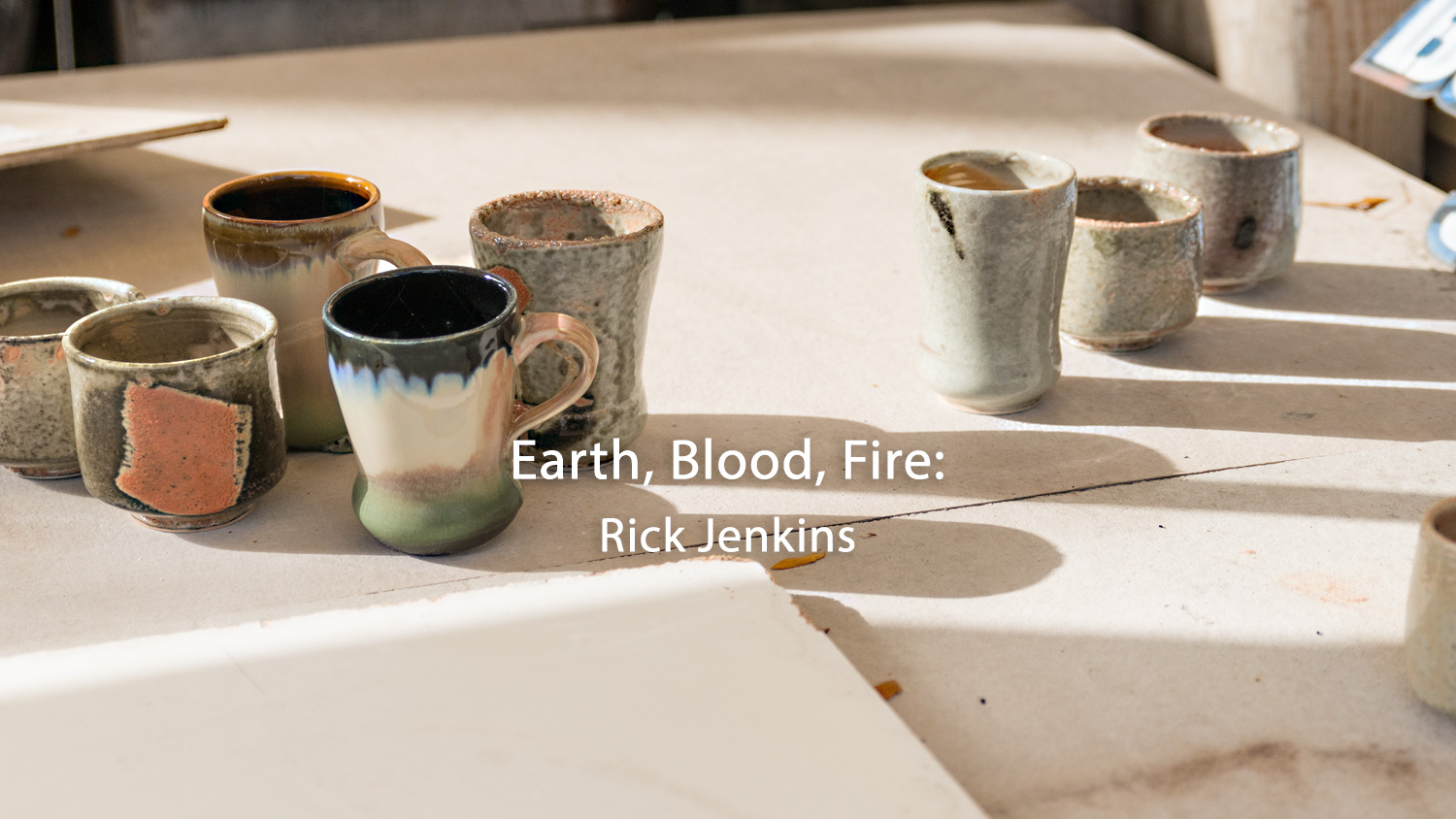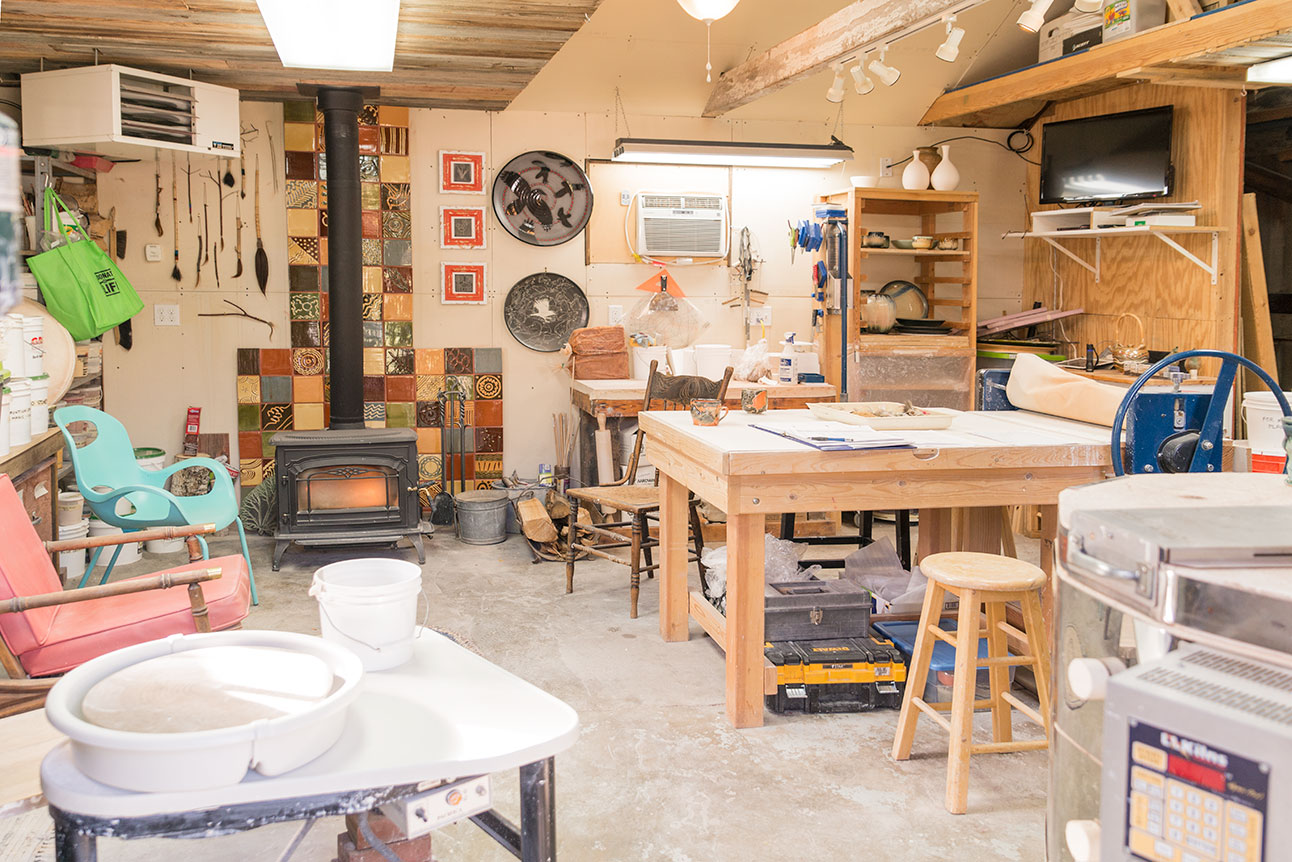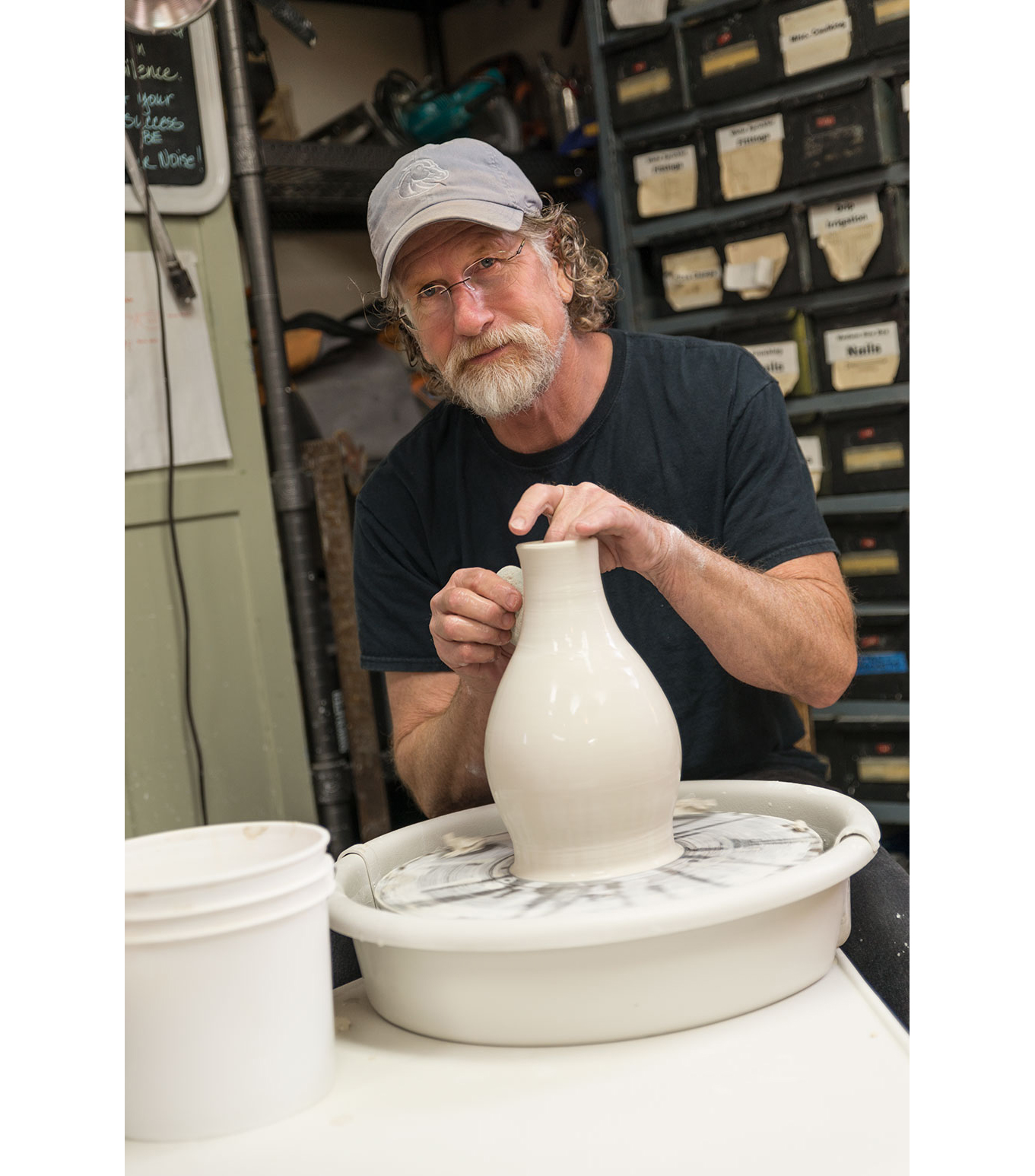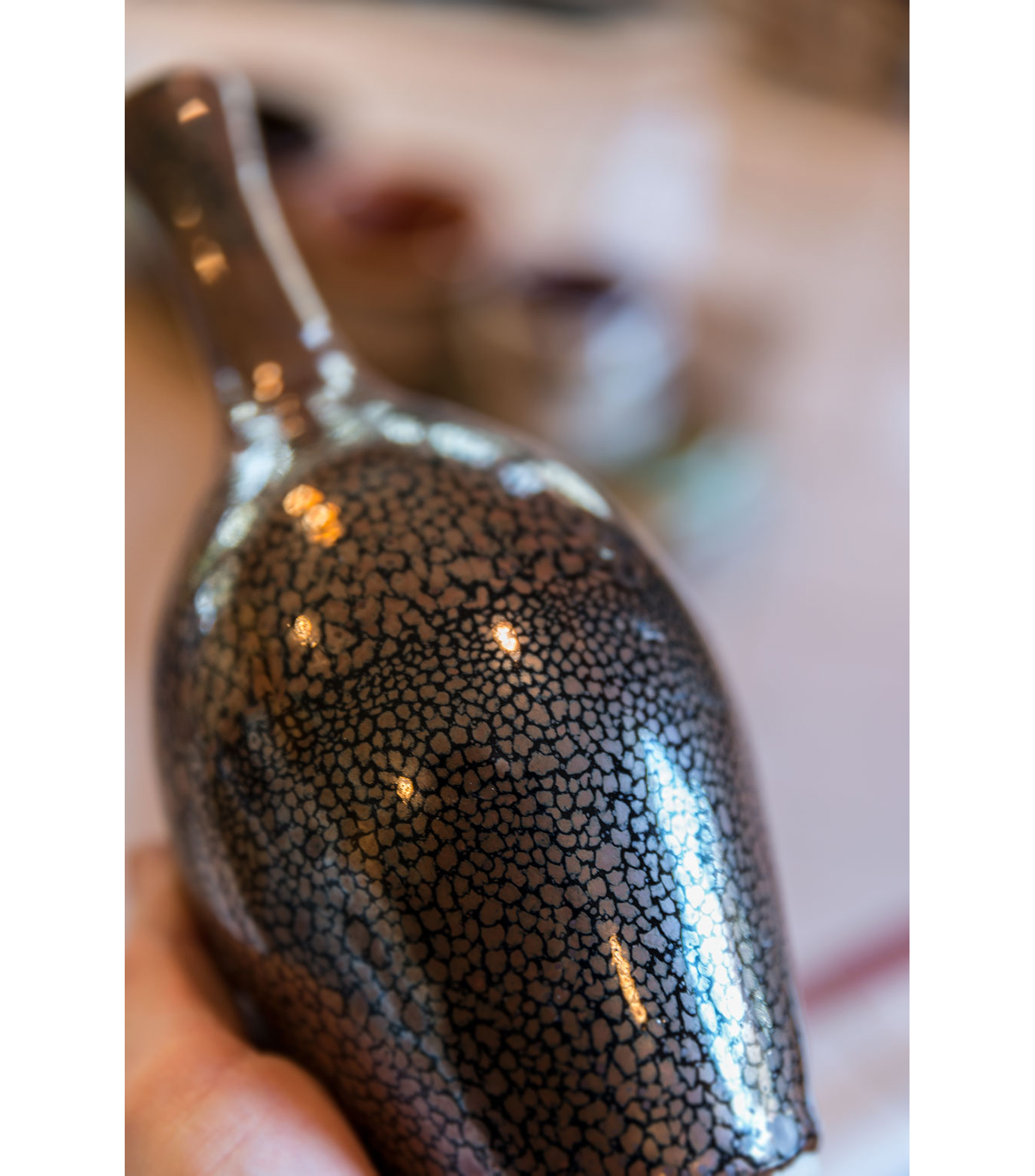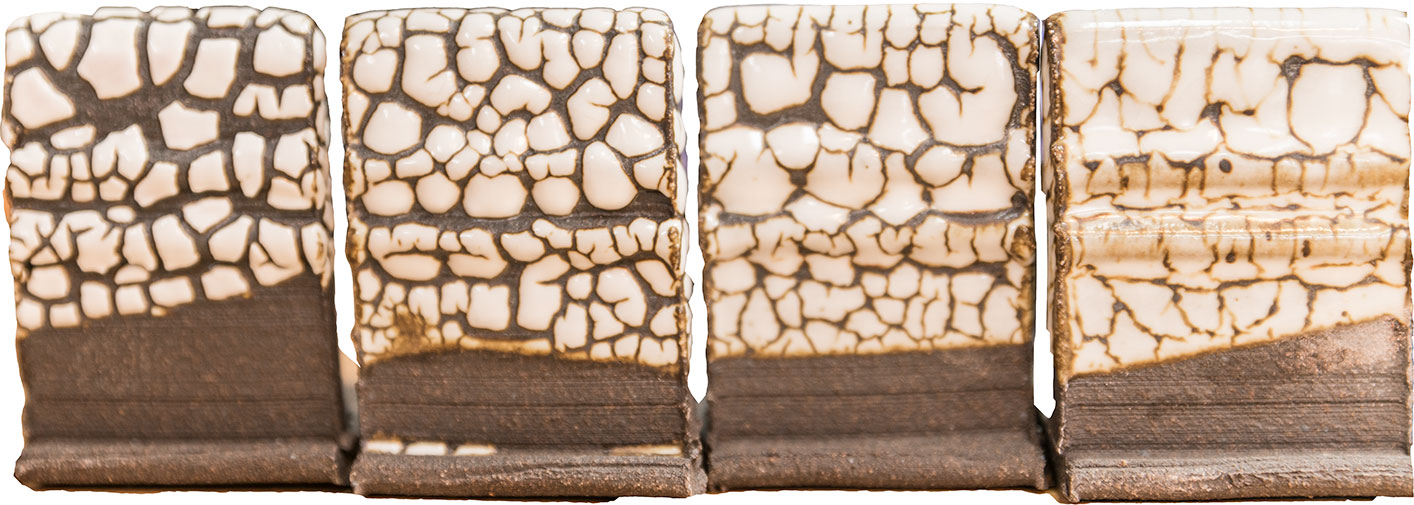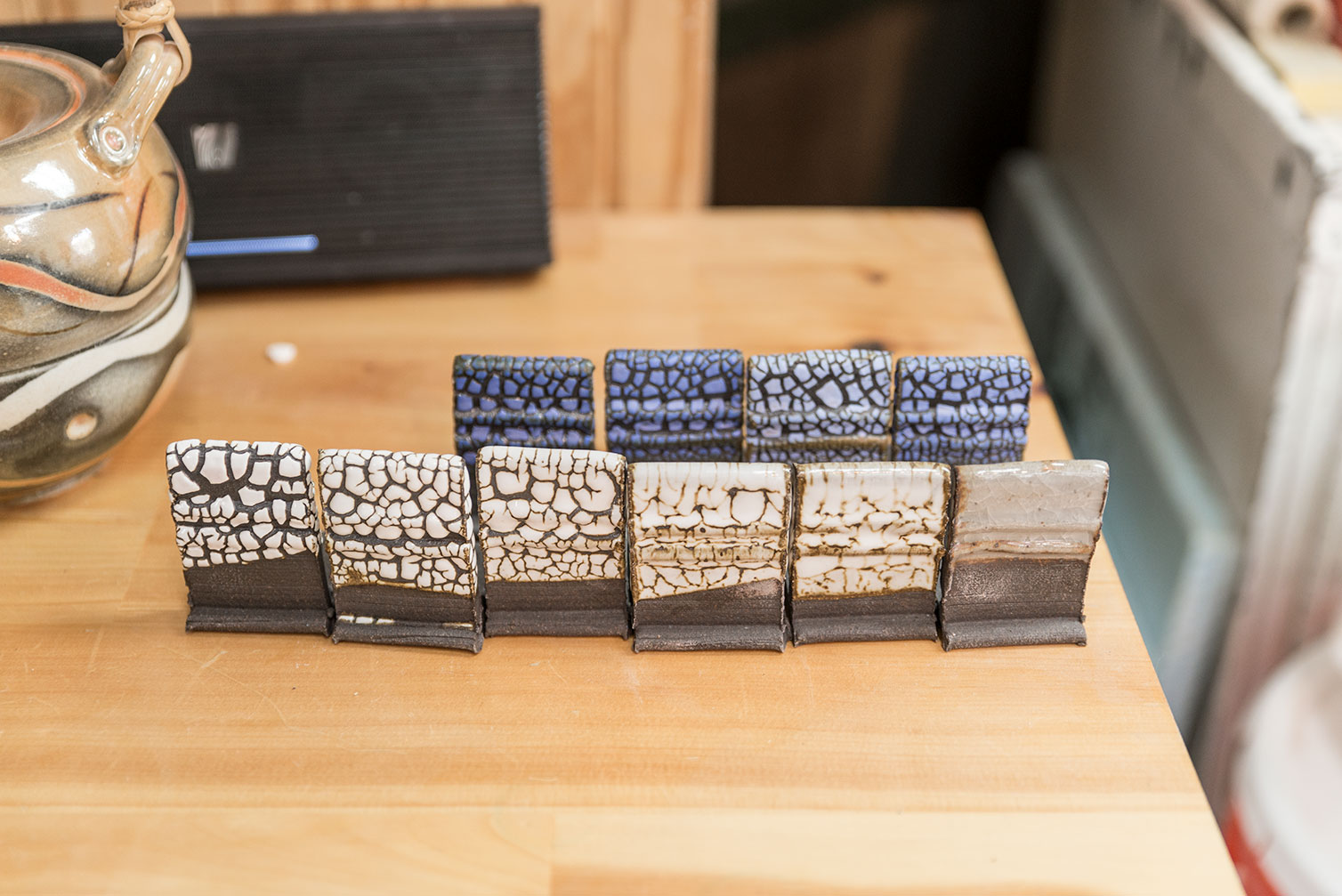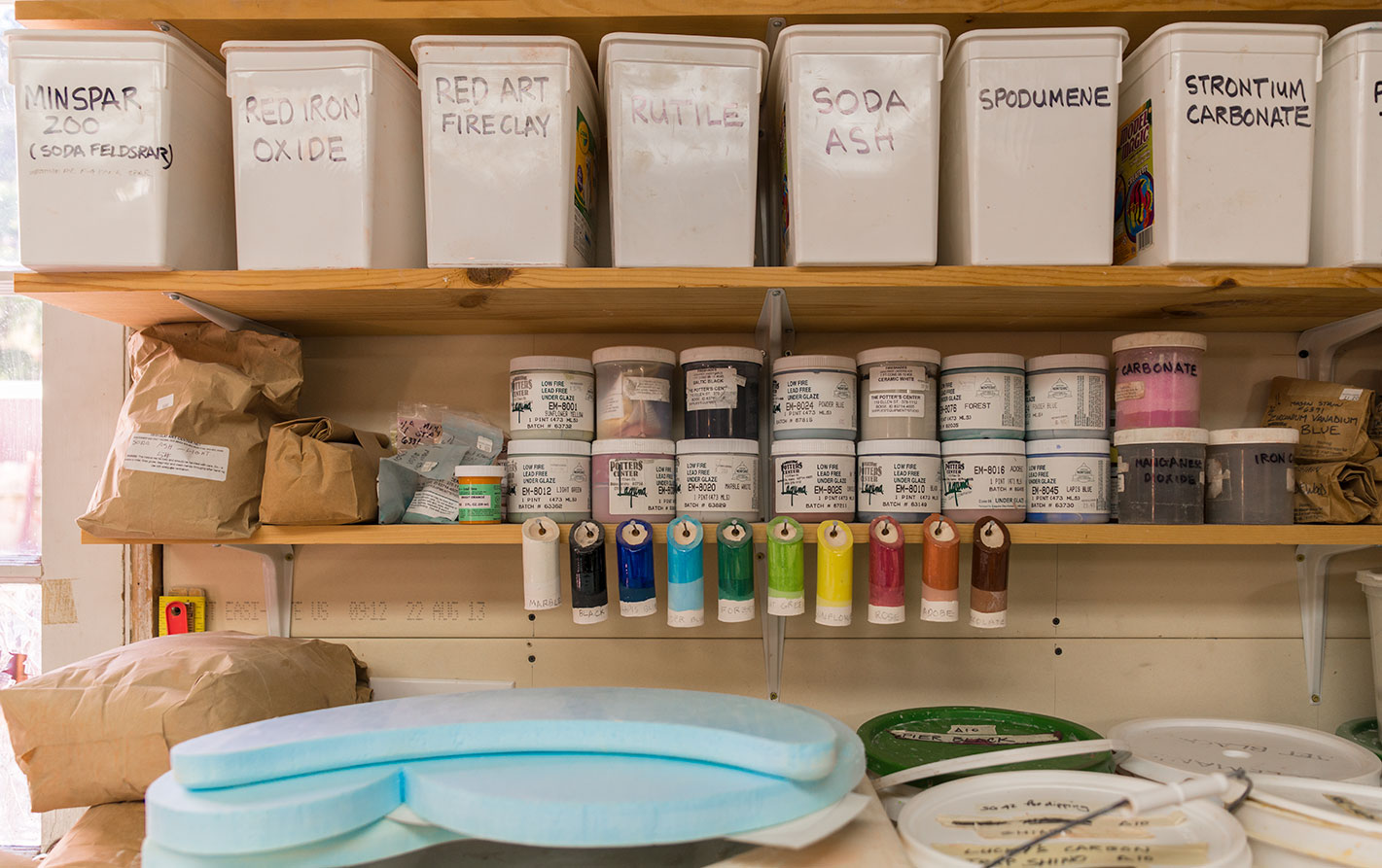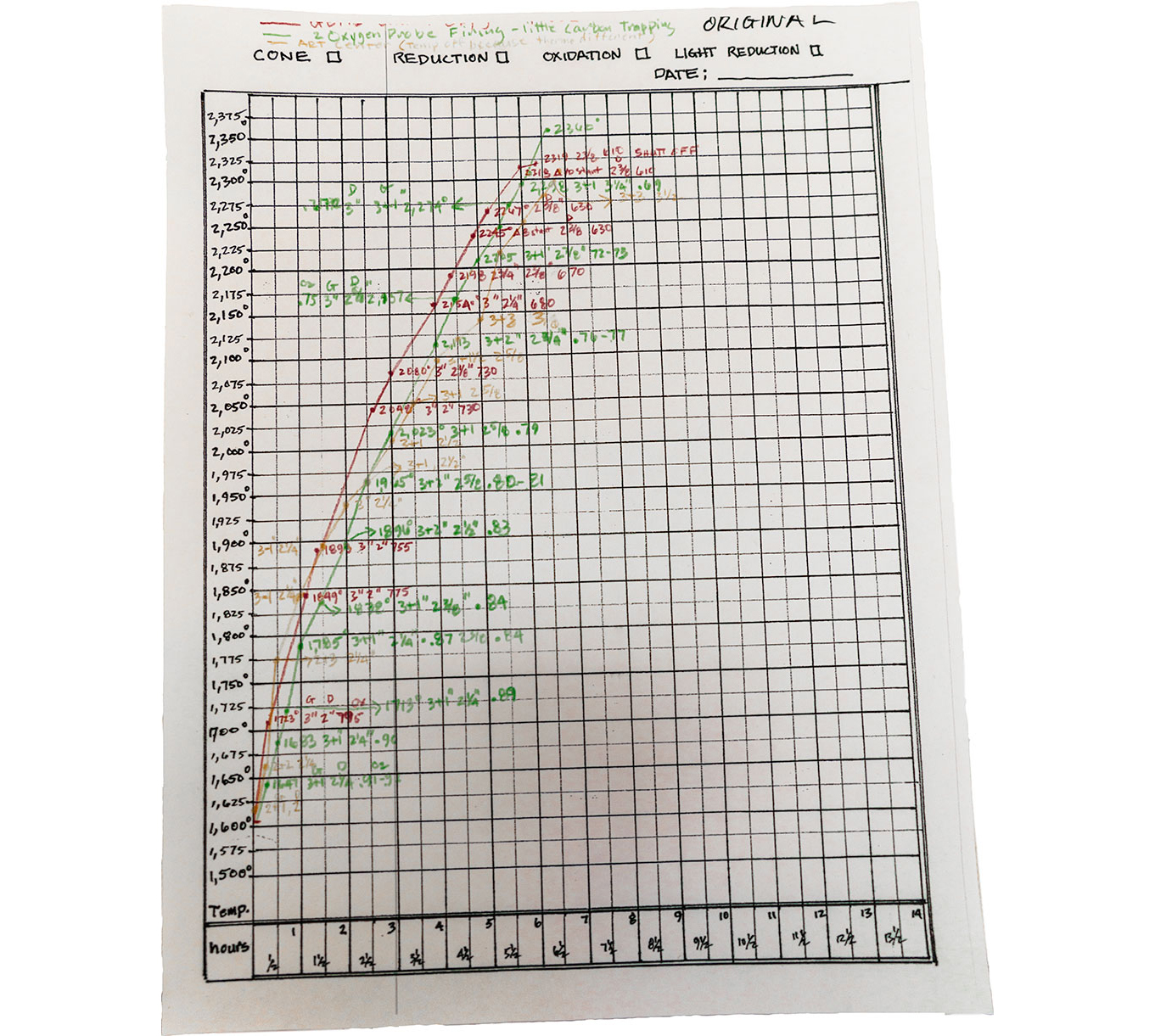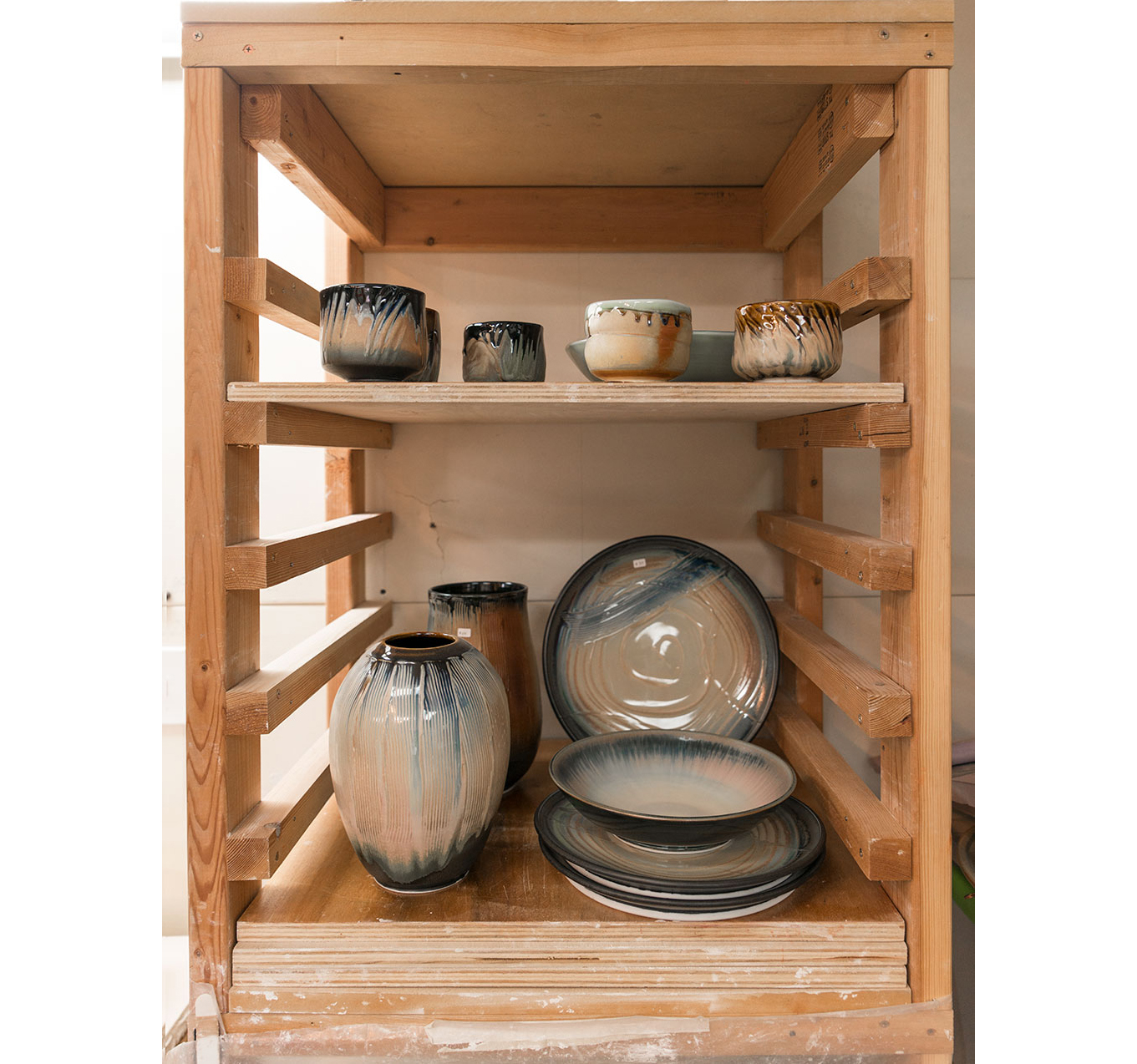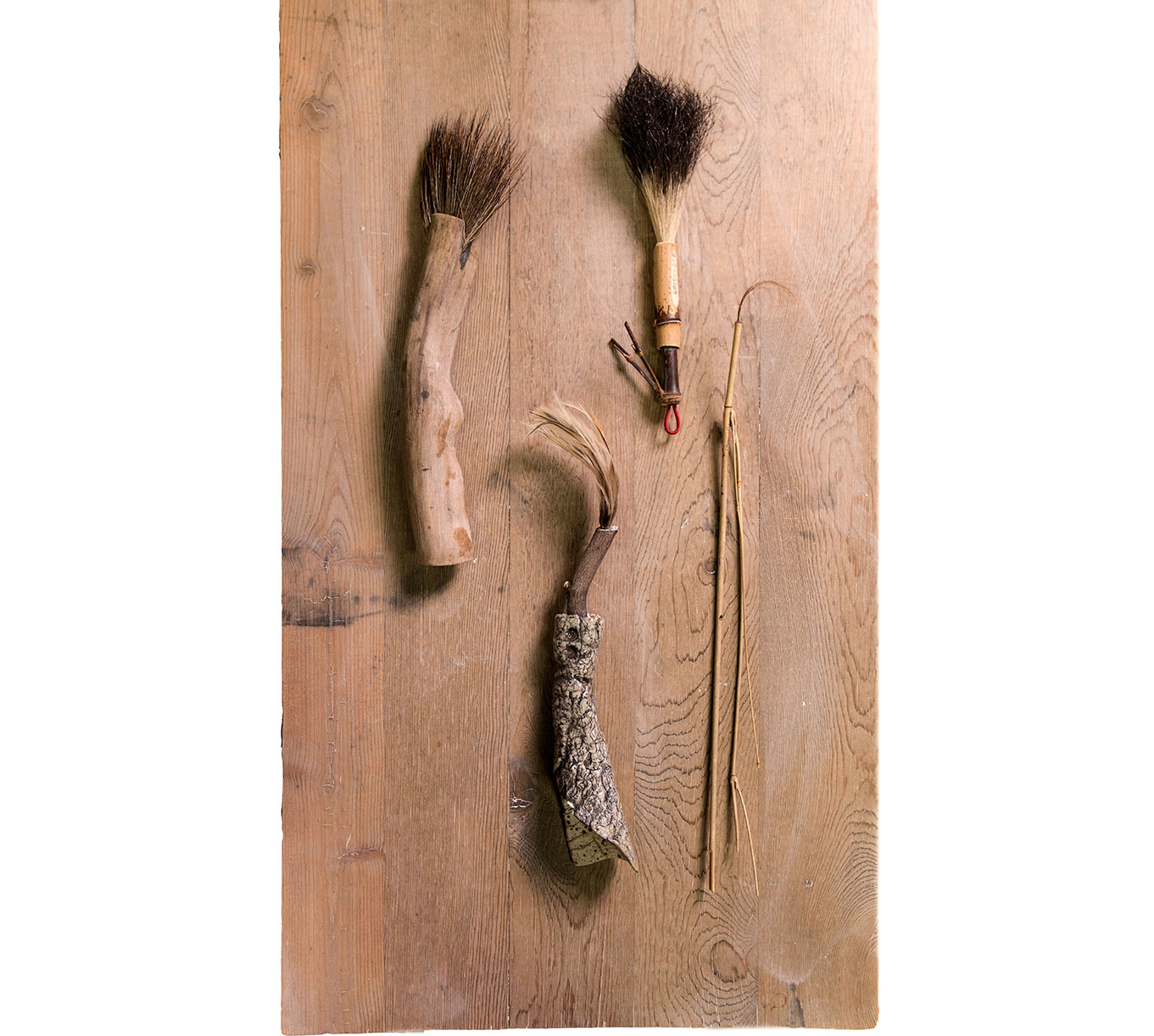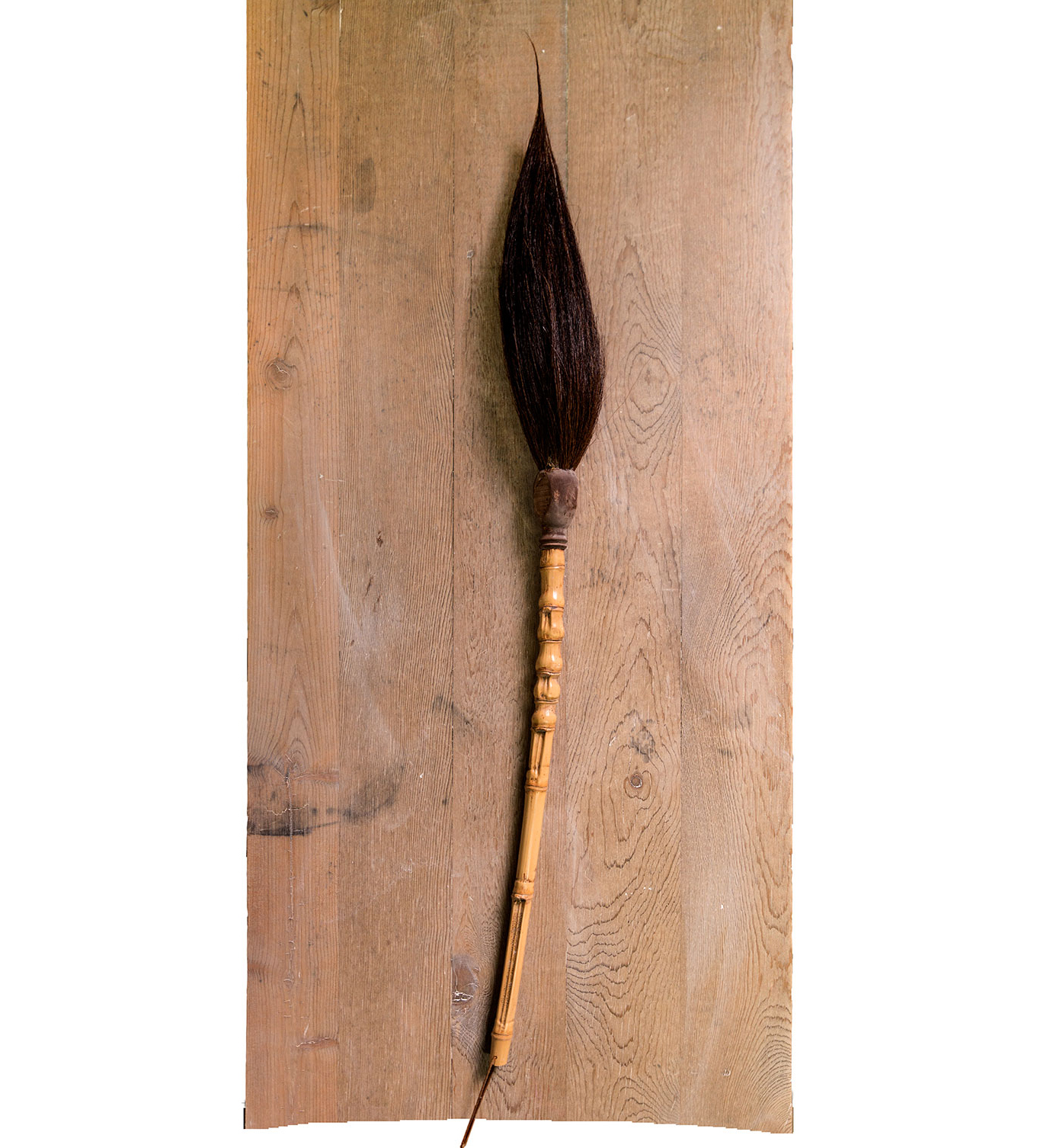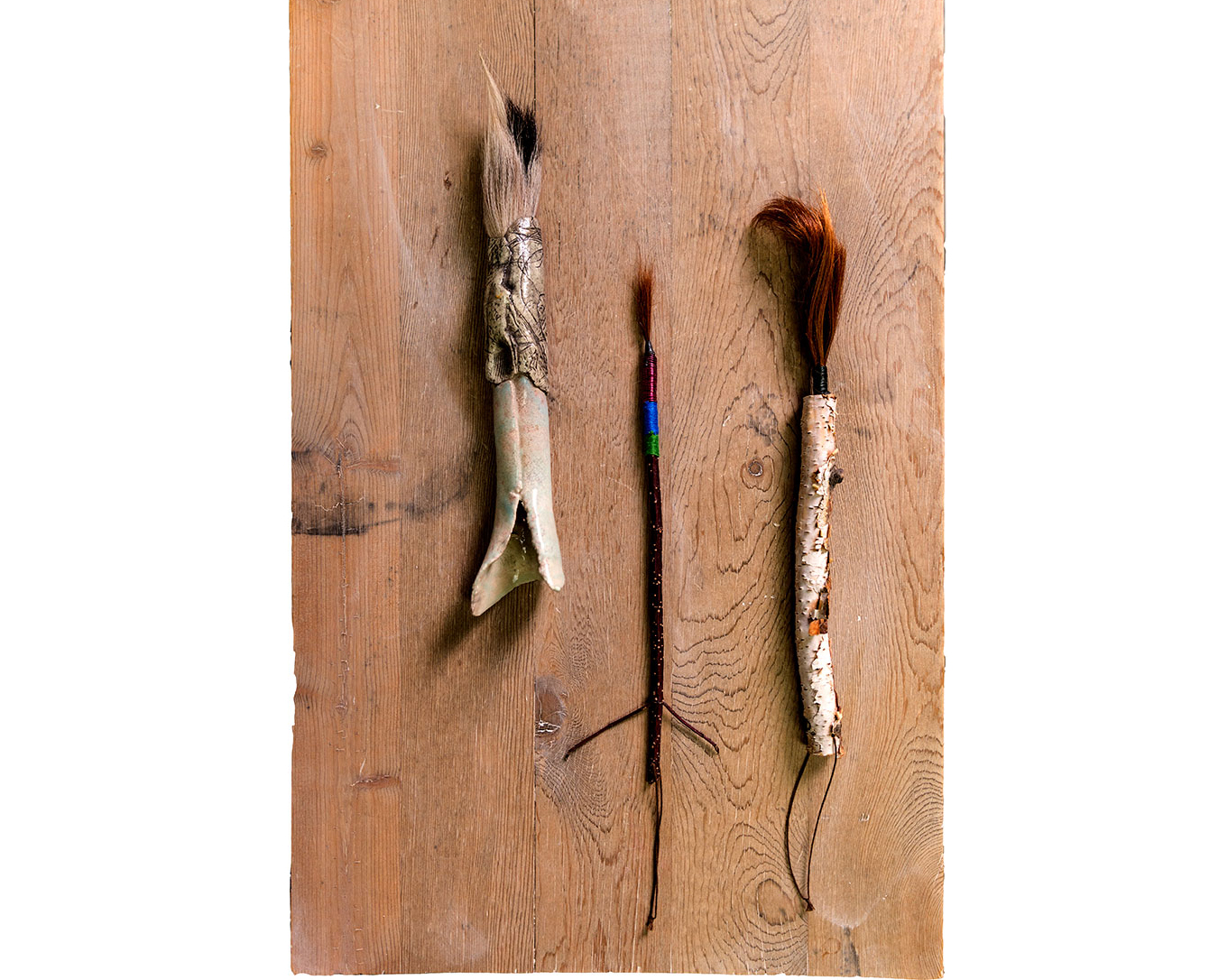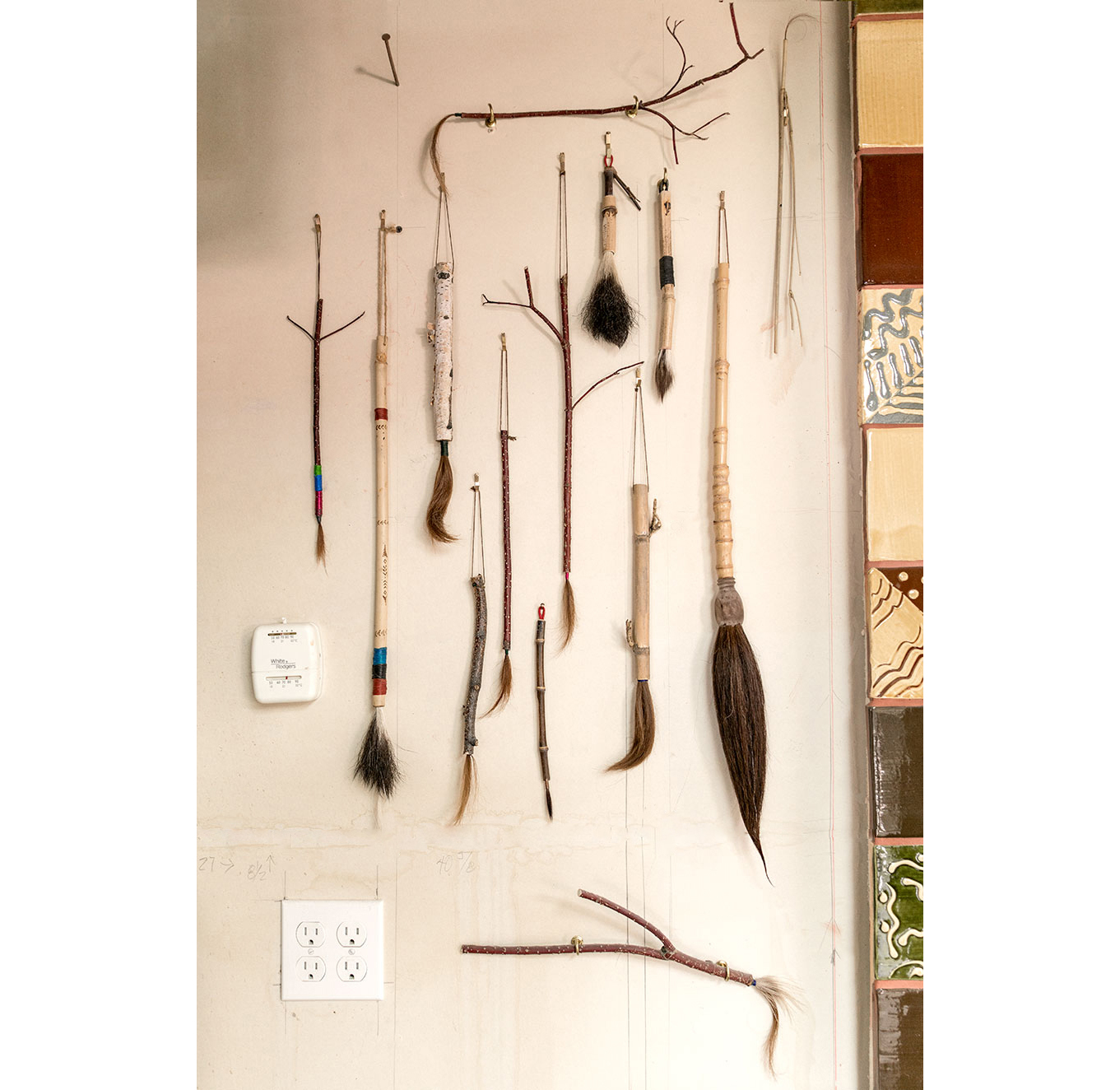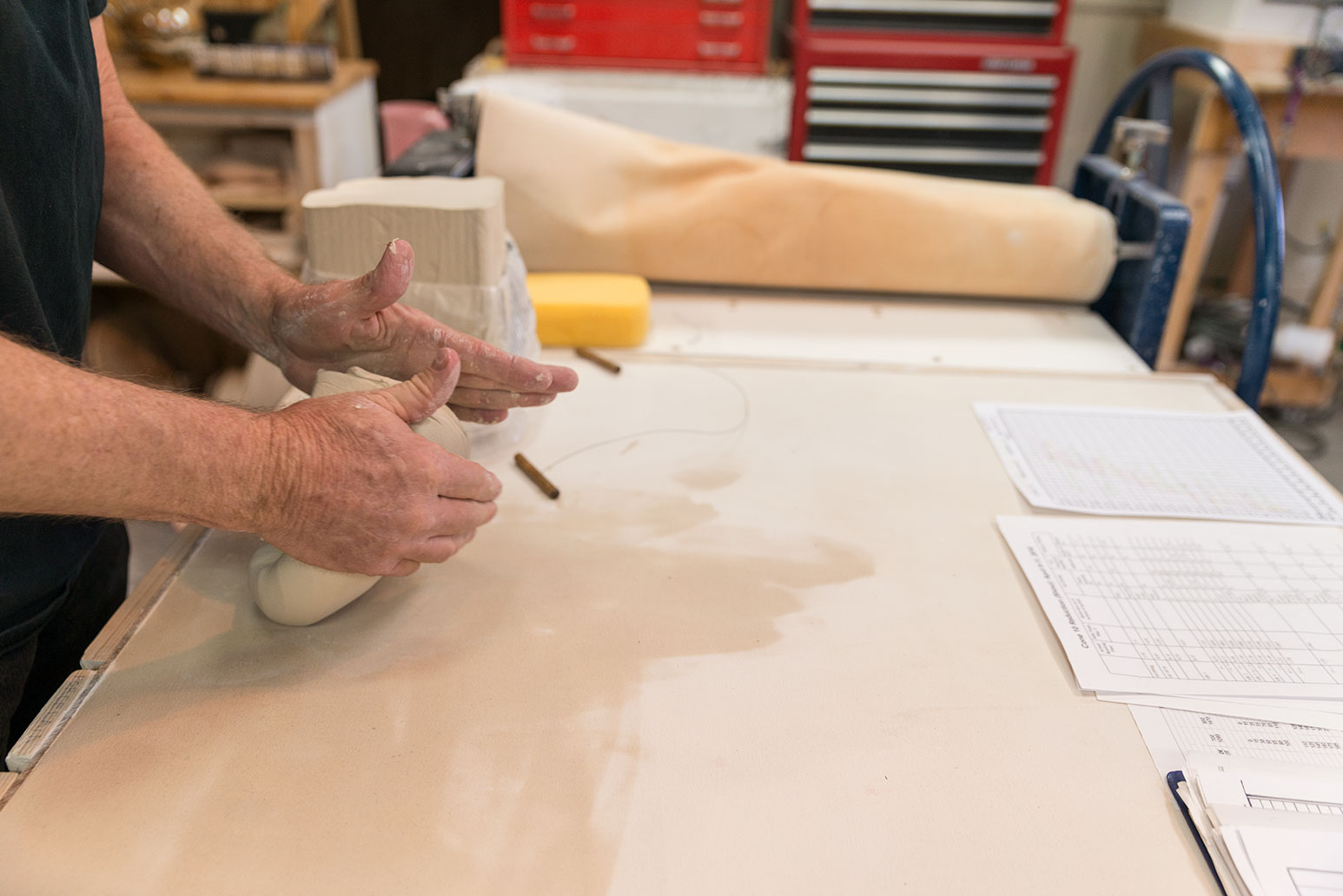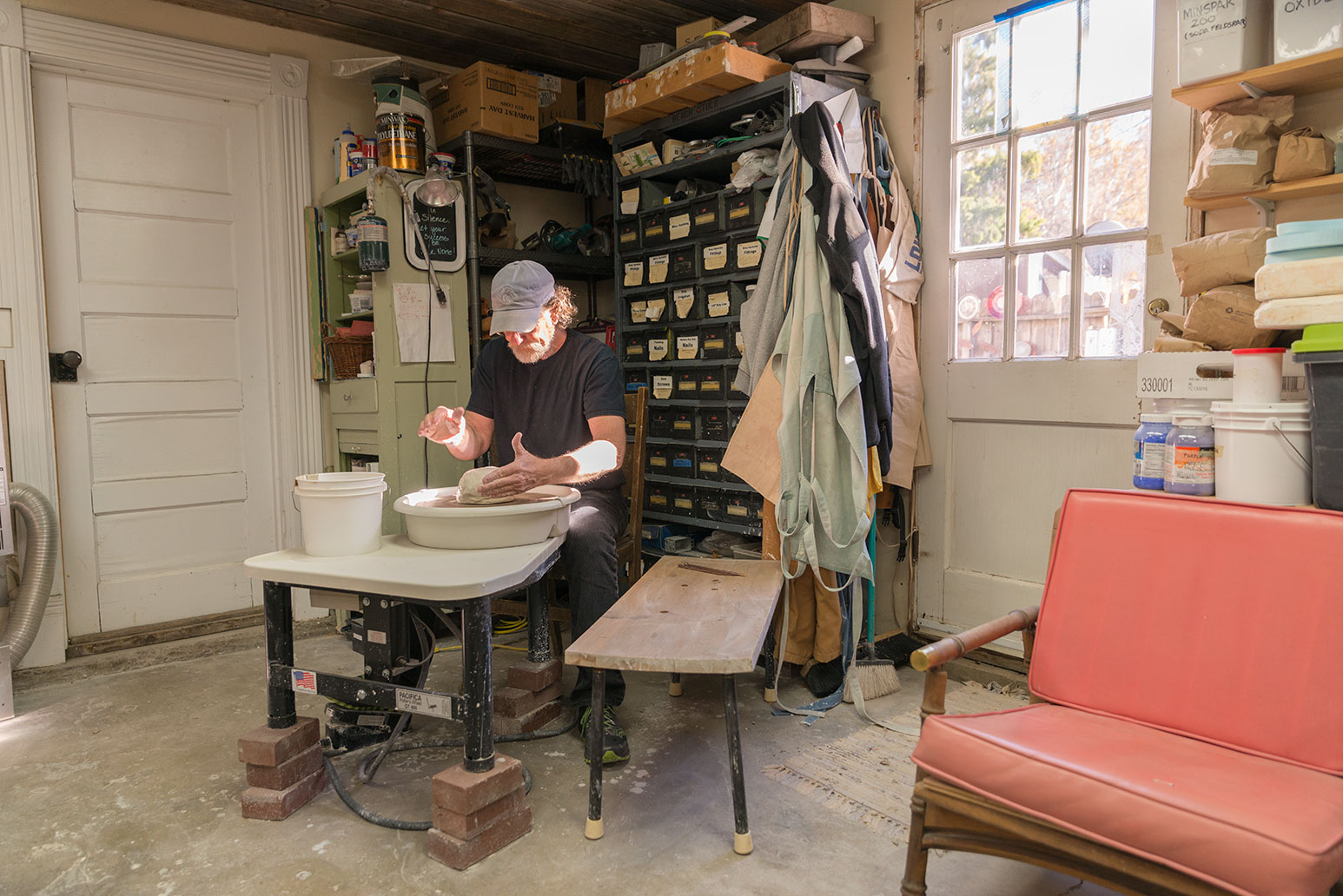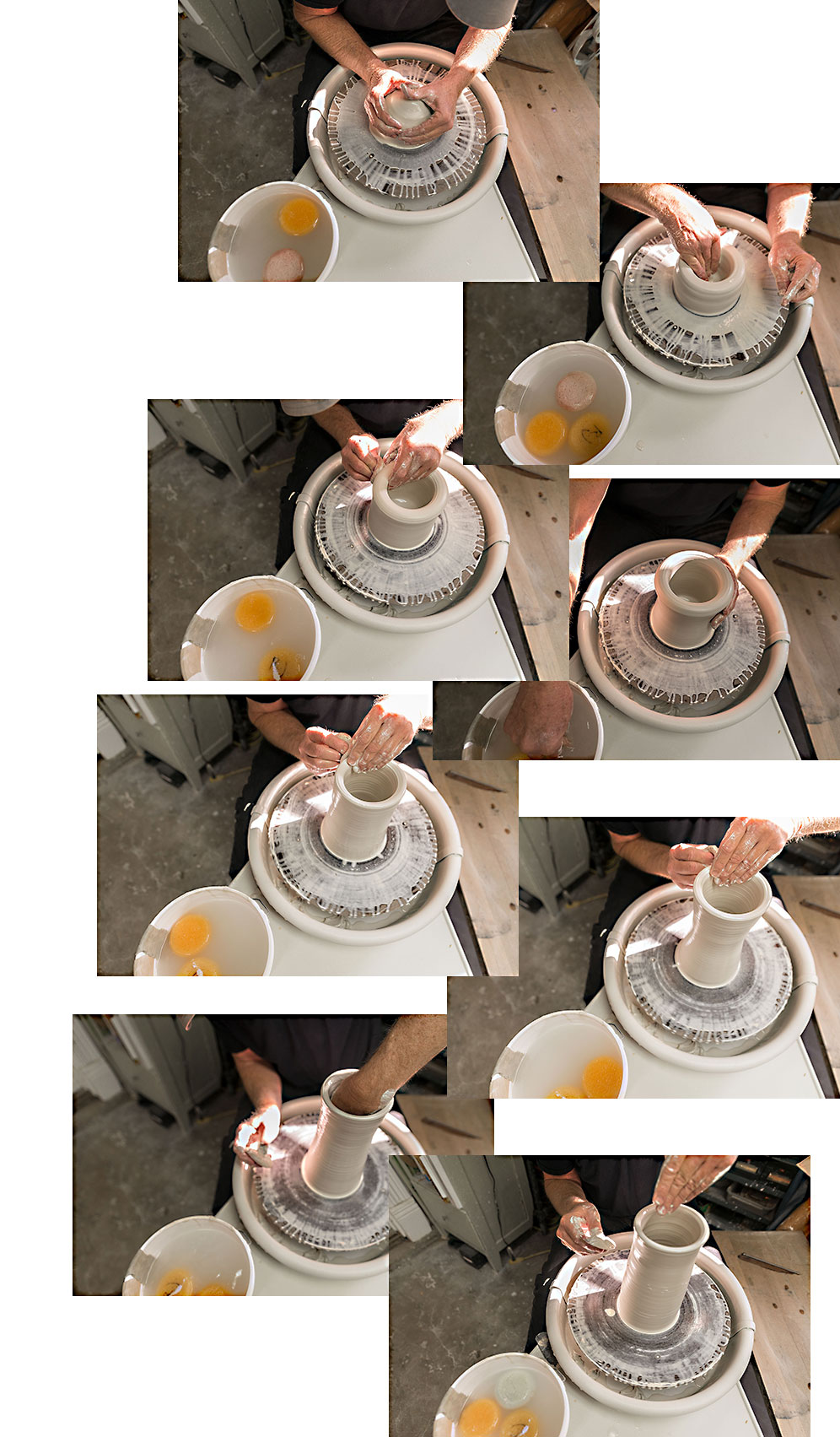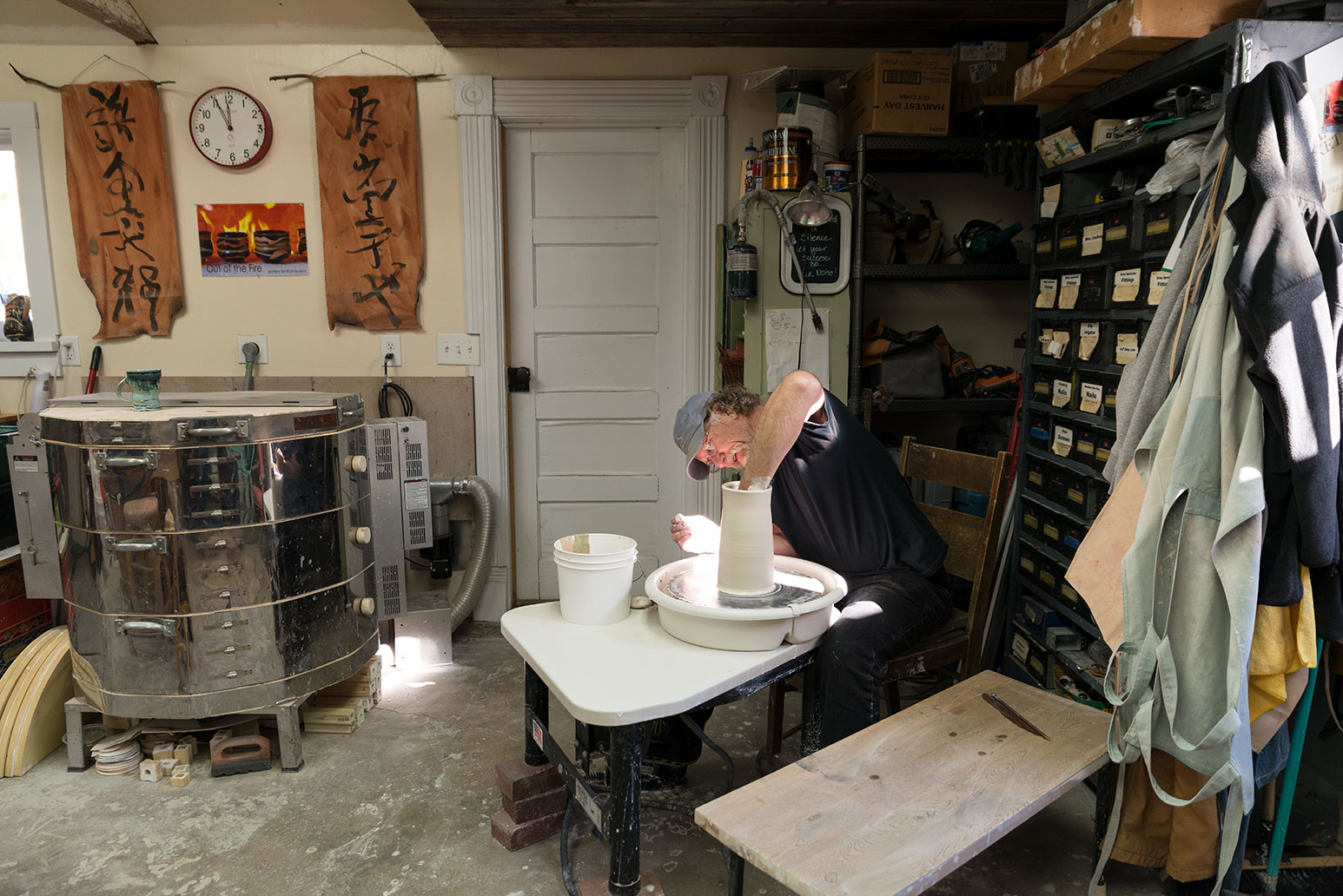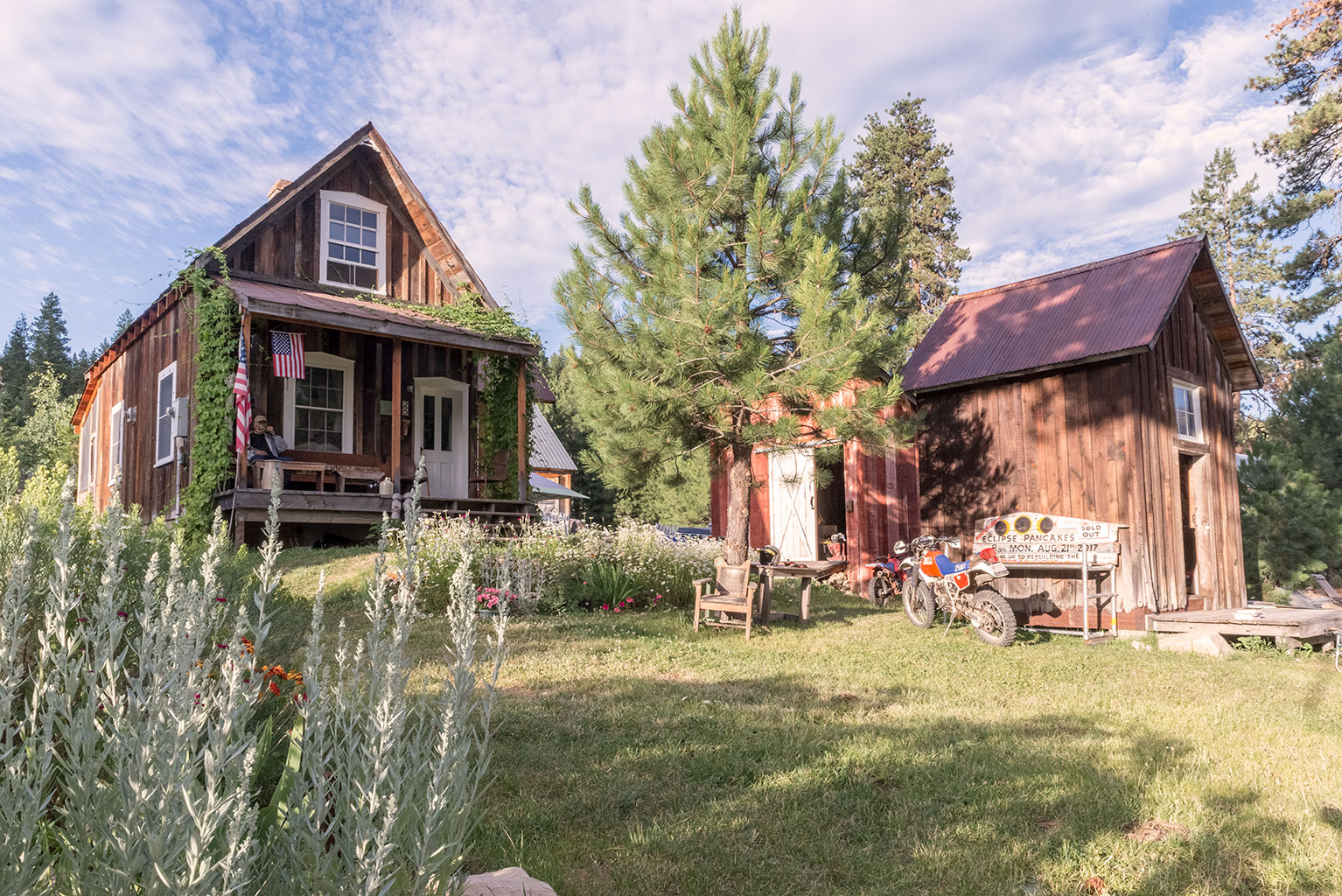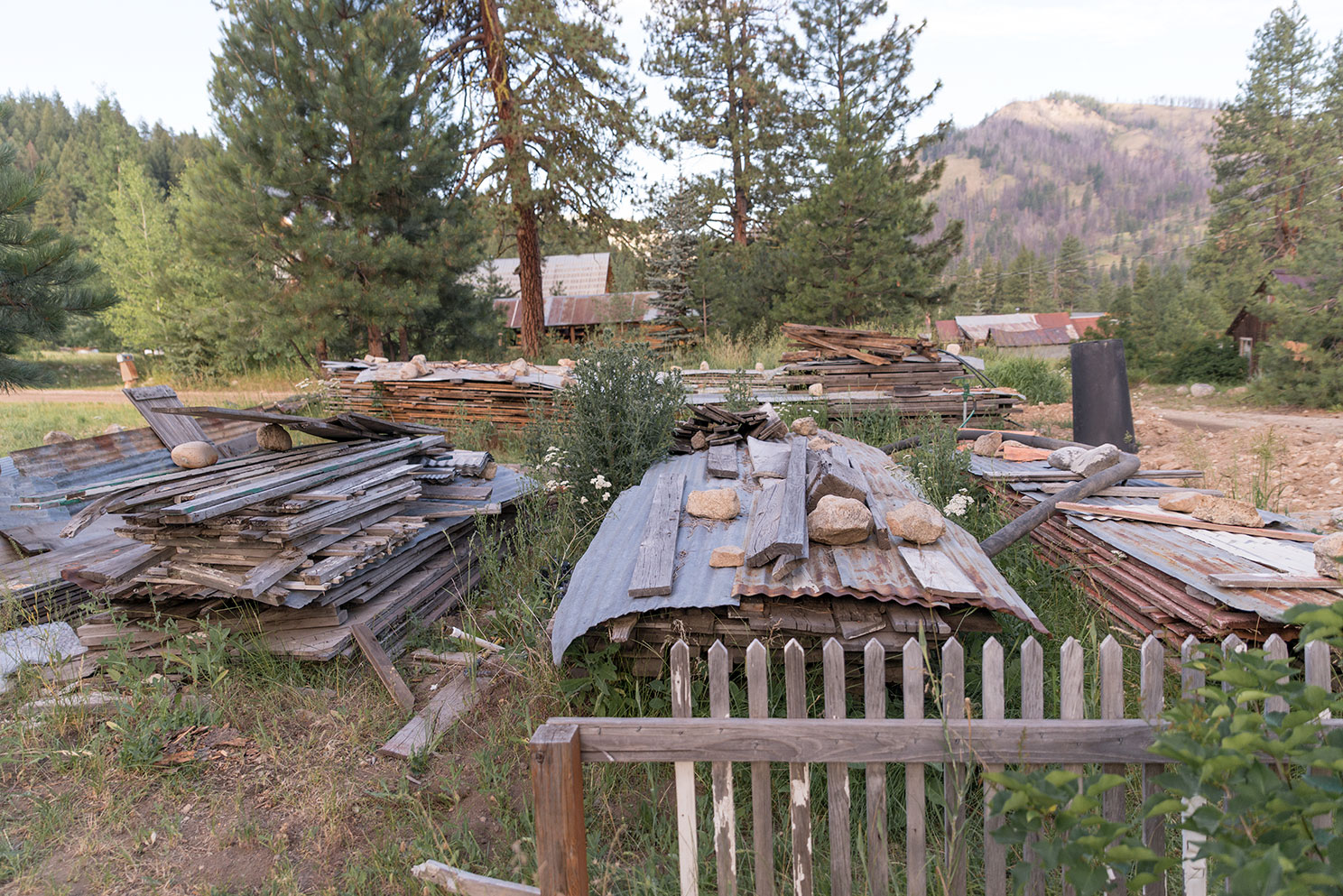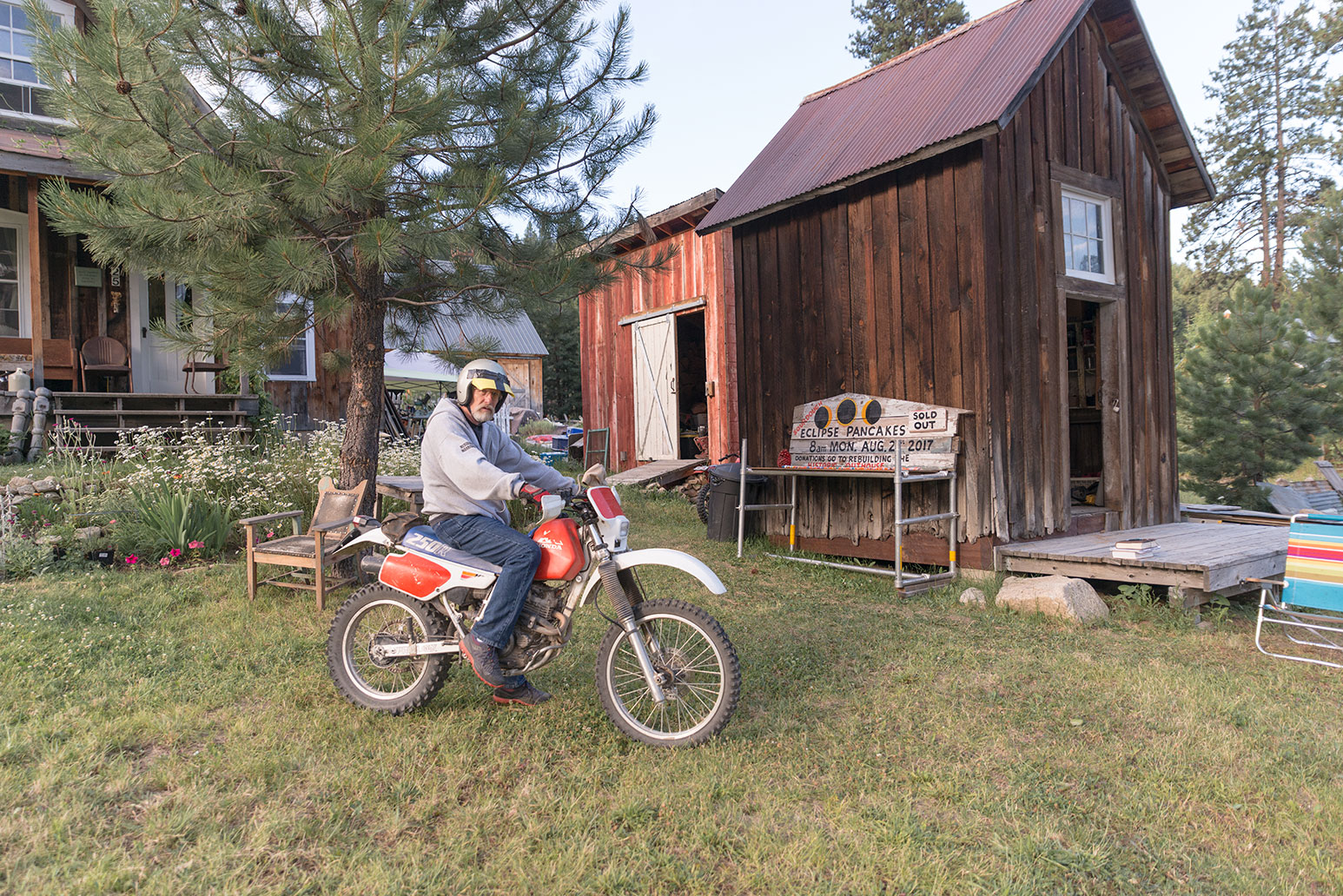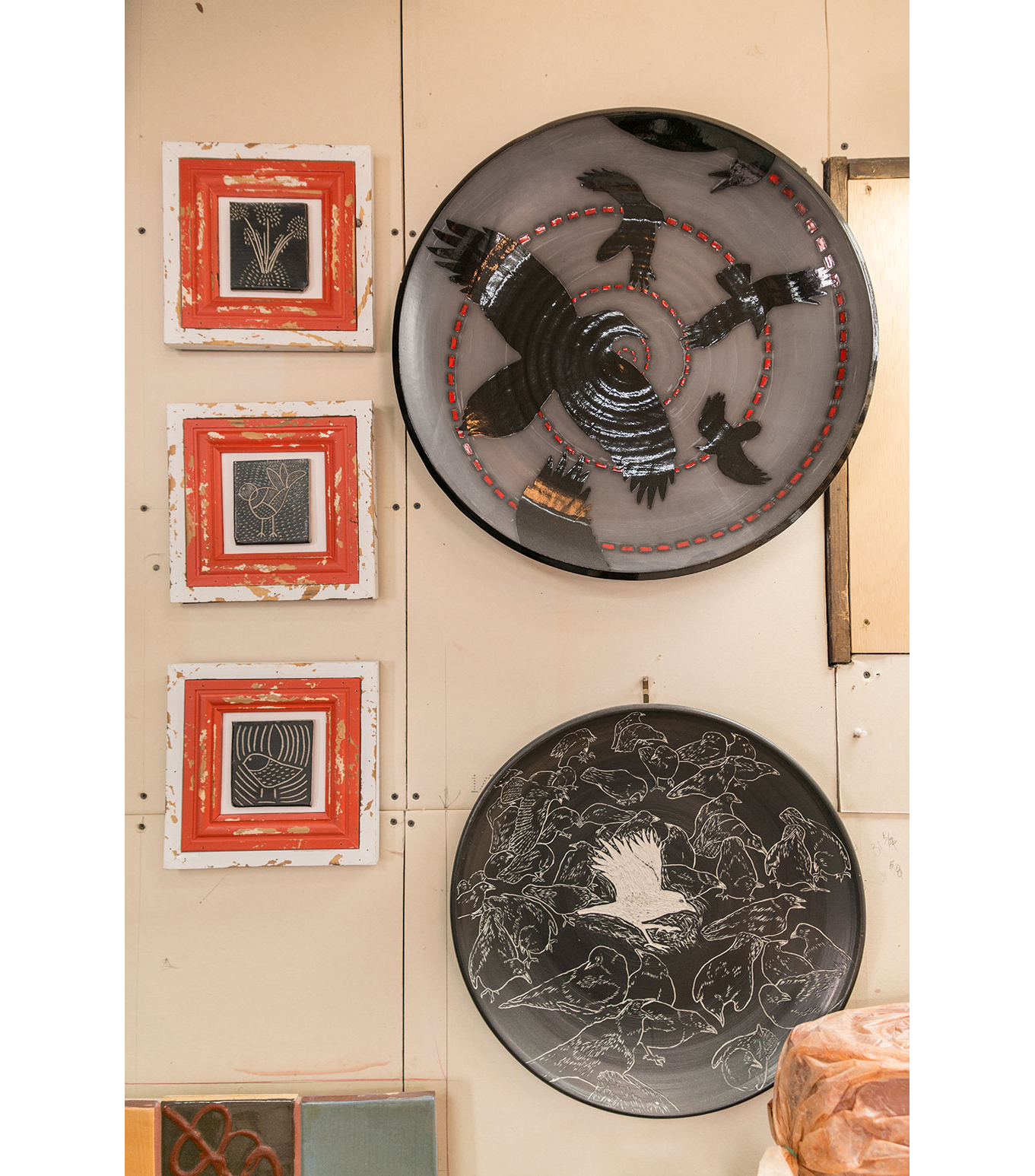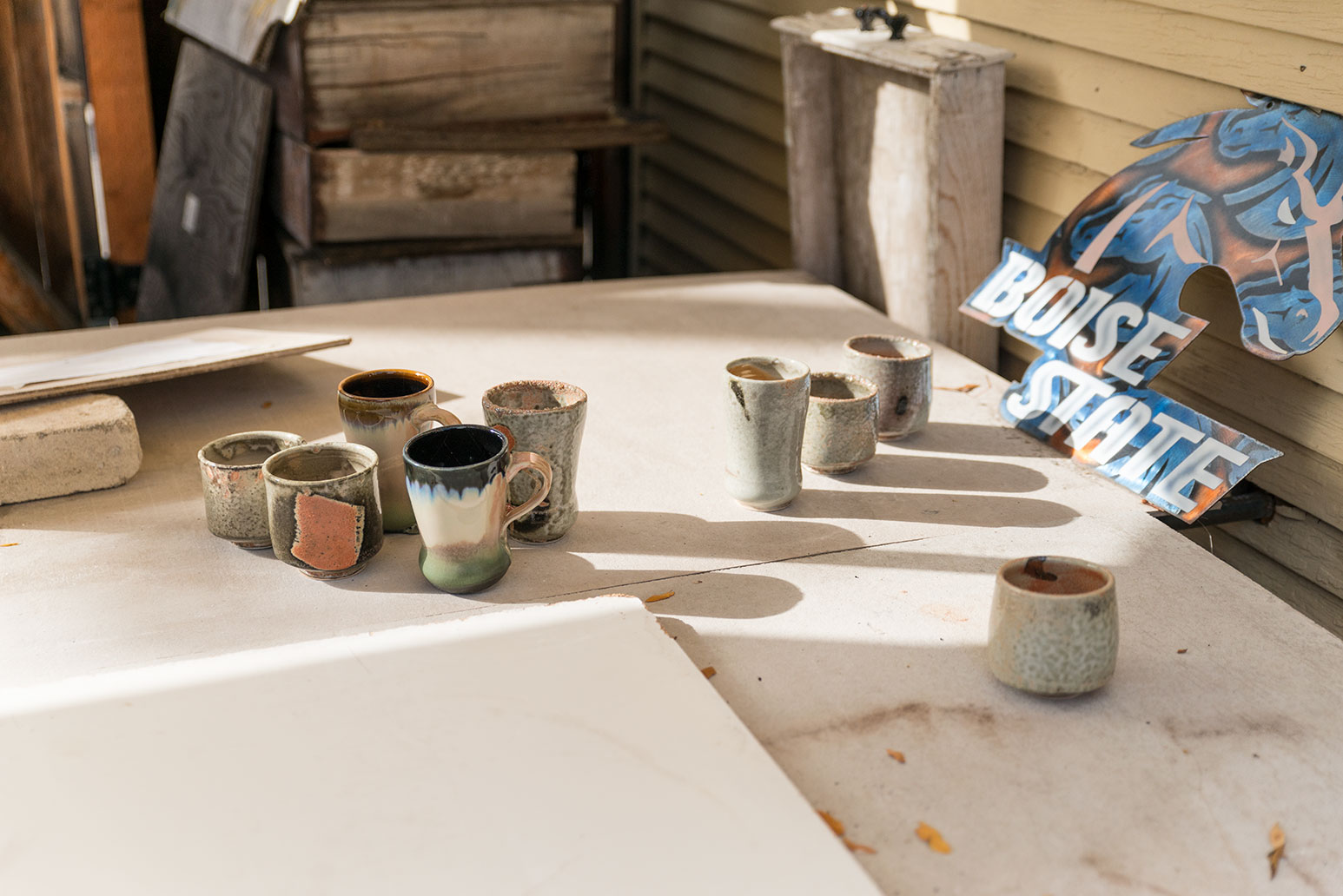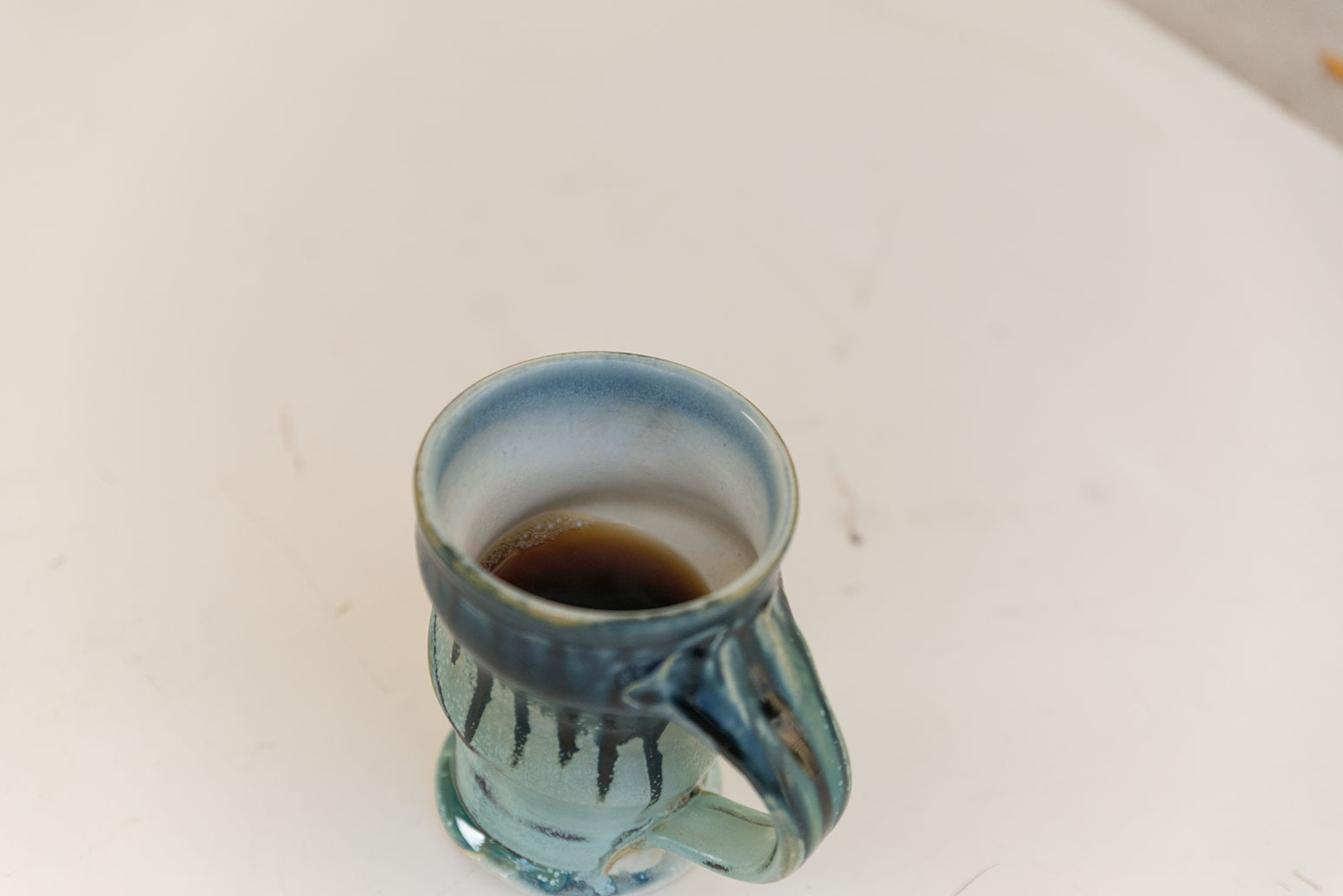Creators, Makers, & Doers: Rick Jenkins
Posted on 11/28/18 by Brooke Burton
Interview & Photography by Brooke Burton ©Boise City Department of Arts & History
Rick Jenkins is a ceramic artist and educator who has shaped the programming at the Art Center inside Fort Boise Community Center and beyond for thirty years, receiving a Mayor’s Award for Excellence in the Arts twice over his career as the Boise City Art Center Director. He is a maker, builder, designer, and tinkerer with an insatiable need to work with his hands throwing pots, digging in the garden, and tearing down houses just to build them back up again, board by board. Rick has passed down his philosophy on art education that demands a foundation of quality: supplies, facilities, and most importantly, people. Six years into retirement, he still reminds himself to slow down, to stay put on occasion and get grounded in the clay. We talked about the soothing nature of dirt, how to share, and putting in the work. He has the rare talent to both a) innovate and construct a complicated spray booth for glazing pots, and b) describe the transcendent exchange of energy that can happen between you, holding a cup by its handle, and the artist who made it. He asks of you no more than he asks of himself: hone your skills, refine your vision, and always, always keep exploring.
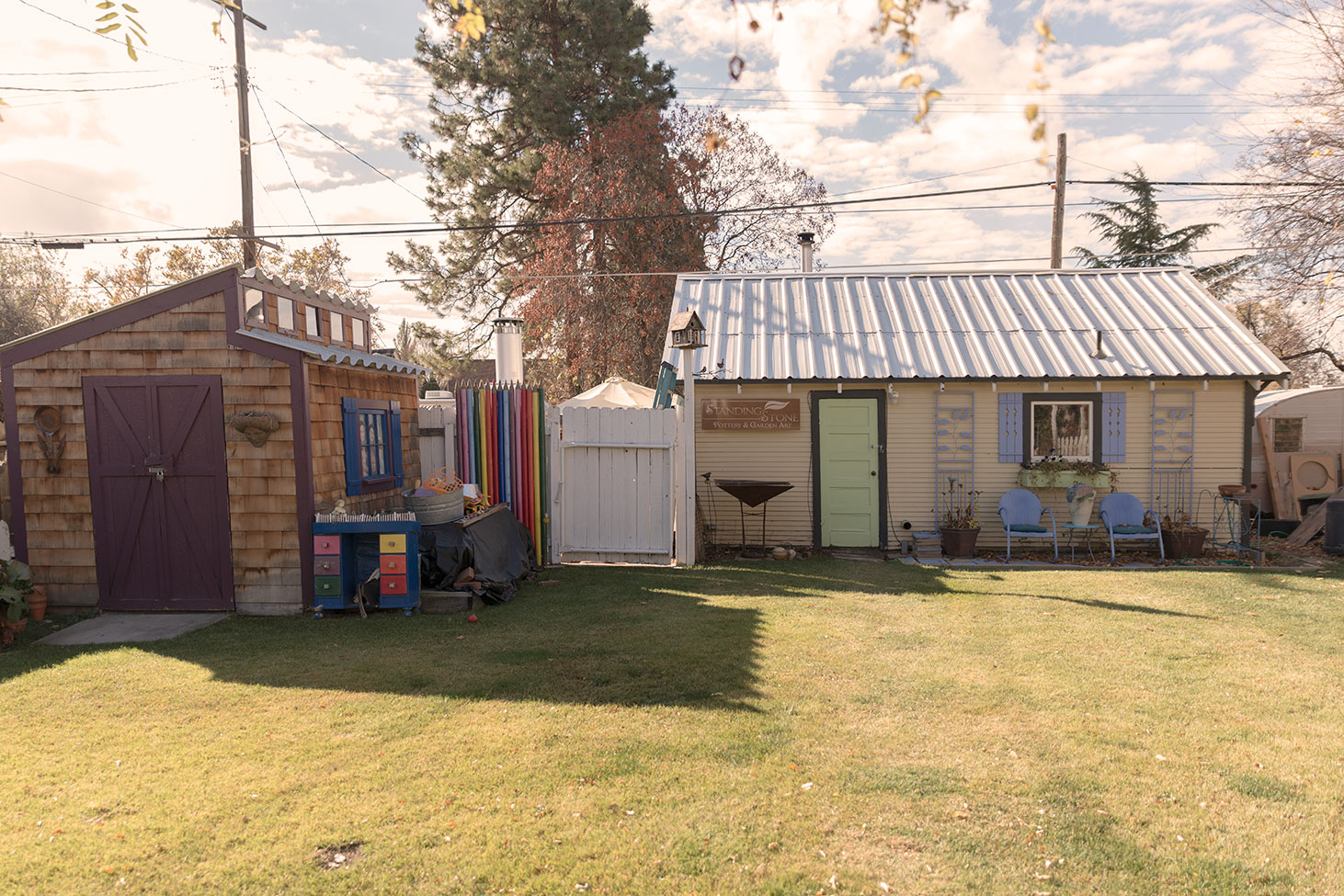
How many years were you at the Art Center?
Thirty-three years, I started in ‘79. I came out of college at Boise State just trying to figure out life, figure out what I wanted to teach; there were no teaching jobs out there. I think I graduated with 50 extra credits because I just kept taking classes and hanging around.
You work mainly in ceramics, what kinds of extra classes did you take?
I always took a drawing, watercolor, and photography class every semester. I worked in the studio for John Takehara, a work study situation, doing all the kilns and loading. I always felt that if I was going to teach I needed a broad foundation in different mediums. The chances of getting a job doing just one discipline was pretty slim, especially going into public schools. I was a BFA major with an Education minor. I got recommended for teaching the beginning black and white photography course at Fort Boise Community Center. I went down and introduced myself, and I went into the dark room where there was just one faucet with cold water. I said, ‘Technically we need to control the temperature, especially when we’re developing film. How do your students work with just cold water?’ And the lady said, ‘Well, they bring their water from home.’ It was set up in this shack-y, temporary, barrack style building. I said, ‘I will plumb a water heater in here if you can buy it.’ I crawled underneath the building and ran all the pipes and cleaned up the dark room; painted it black and organized the supplies. I was teaching one class for a couple of hours. I did all that work because I felt you have to offer a quality experience for the students. I think they were impressed because they said, ‘We want you to apply for the full time position.’ I sat in front of the recreation director desk and he said, ‘So, you’re the one they want,’ ‘I guess so.’ And he said, ‘You’re hired.’
That’s kind of beautiful though.
It was! It was very serendipitous. It was great.
Was the community center in the same location as it is now?
No, it was actually across the street next to the tennis courts. When it was a military post, they had temporary barracks that housed soldiers, they were not built for long term use.
So when you said barracks, you meant actual barracks?
Yes, it was a wooden structure, kind of thrown together. When I got there, I could see light coming in through the walls. There was no insulation, nothing. The center had been there for awhile, but nobody, instructors, stayed very long. Most people I knew who came out of Boise State stayed and worked there maybe a year. I thought that would probably happen to me. But I liked the setting because of the people who signed up for art classes. They want to be there. There is no pressure of earning grades or needing to get a degree. They wanted to be there. When I first started, I thought, ‘Oh it’s going to be little old ladies who want to paint roses’ or something, which is alright if that’s what people want to do. I thought I wouldn’t get anybody serious about the work. It turned out I was wrong. All kinds of people, all kinds of professions, all ages, all walks of life show up down there. Maybe they are a doctor who didn’t get a chance to take art classes but always had a love for art and they came back to it later in their lives. When I took over, I felt like, who says you can’t have high quality instruction in a recreation facility? In a university setting, you hire quality people to teach your classes and offer a program. I thought, ‘Well, what’s different here?”
We’re talking about hiring people who take their discipline seriously and having students who want to be challenged. That’s a match made in heaven.
Yes, they wanted to grow and excel. Basically, I built the Art Center with that philosophy and I hired good people. They all had degrees, some had Master’s degrees.
You designed your programs from a professional artist’s perspective?
Exactly. For kids up to adults. The Boise School District has no art specialist for its elementary schools. People move into town, coming from other states, and they are used to having art taught in their schools. They question, where will my kid learn art? I had the same philosophy for the kid’s classes: I want it to be fun and enjoyable but I want those kids to be learning something. To my instructors I would say, ‘Hey, you can teach color theory without making it academic and boring. You can do a great class where the kids are having fun but also teach them what happens when you put complimentary colors together.’ Really what makes the Art Center successful is the people. Because back then, it certainly wasn’t the facility, it was marginal to say the least.
You changed that as well?
Yeah! After building up the program—it took me about 18 years to finally convince the City Council and the Mayor and the people who were controlling the budgets to build a new Art Center. That was a really cool process, I was excited. We got funding and we built a 4,000 sq. ft studio, three studio spaces actually; that was in 1996. I knew once we got the facility, things would really blow up. We already had a great following, but people were cramming into these dinky little rooms. When we got more space, more opportunities, and a nicer facility, I knew registration would increase. And it did, it substantially increased.
You were awarded the Mayor’s Award for Excellence in Art Education! Twice actually, once for Excellence in the Arts as an individual! What’s something you try to ingrain in your students?
To explore. Try different things. Don’t worry about being great at it. In my ceramics classes, I’m always encouraging students to explore different ways to make things; hone their techniques. It’s rewarding to see somebody in the beginning; they can’t do anything with the clay, they’re brand new, their clay is flying all over the place, and they’re frustrated. You just take them step by step and watch them grow. I have students that have taken my classes for over 25 years, and they just keep coming back.
How about you? Where do you push yourself?
I’m known for exploring the glaze and firing side of the work. If I’m reading an article on a particular style of glaze that is difficult to achieve, then that’s like a hook, it snags me. I’ll spend years trying to figure it out.
You take it on as a personal challenge? You showed me your notebook all about firing and glazes, it looks extremely detailed and organized.
If you’re firing glazes that are really dependent on the atmosphere of the kiln, then you have to track it. Like the leopard shino, it’s an old Japanese glaze. It takes a real unique firing and it has to be timed perfectly.
Do you know many people who go in-depth with glazing the way you do?
I belong to Facebook groups that are focused on glaze experimentation; locally there are a few people but not a lot. I try to teach my students about glaze experimentation and the firing process, but they tend to want to glaze their pots, put them on a shelf and come back when their pots are all finished firing.
Where do you go to get inspired?
I go to workshops, at least once or twice a year, with well known ceramists. There’s a fellow, Tom Coleman, I really admire his work. He will be demonstrating different techniques and we’ll bring our own pottery down to do a couple firings together, so it’s kind of a combination of demonstrations and hands on work. Just learning from people that are masters. I am always curious, ‘How did you figure that out? What’s your technique?’ I read a lot. I admire people that have dedicated their whole life to figuring something out, they’re good at it and they’re willing to share it. Most potters are that way. They are earthy people and they love sharing. They’re not secretive.
Do you run into secretive art types?
There are some. It’s like ‘I’ve worked really hard to do this and I am not going to give it up that easily.’
Because their method, or style, is perceived as having a value. And if it’s shared, it loses its value somehow?
Yes, or maybe it gives them a leg up, it’s their marketing technique and they’re not going to give that up to just anybody.
That happens in photography too. I think learning to share is kind of a big life lesson.
If you’re going to teach, you cannot have a secretive philosophy. You have to want to share.
Have you ever been in a situation where you feel a student has a higher potential than you do, and feel like—like a little sting?
No….
Hmmm.
I had a couple kids who worked for me in the studio and now they’re in university. They’re going to internships all over the place, they’re just blossoming. I know they’ll be way better than I am. And I am excited for them. When those people come back later in life and say ‘You made a difference’—there’s nothing better than that. They might say, ‘You sparked something in me that I didn’t even know I had.’ That’s one really great thing about being a teacher; people come back around and you get those kinds of comments.
That feels good! Has technology affected ceramics?
It has. There are kilns now that are computer controlled so you can punch in a program; it will turn the kiln up, adjust the atmosphere, it will turn itself off. For me, something is lost with that. It becomes mechanical. I’m all about looking at the flames coming out, seeing the smoke, smelling it. Checking it, adjusting little things here and there. With each and every firing, I will play around a little bit, it won’t be the same as the firing before. The kiln and I become—we have a relationship, let’s put it that way [Laughs]. I’m dating this girl, I’m getting to know her, we’re not sure if we’re going to like each other, we’re working out the details, but we think we like each other, but we’re building on that.
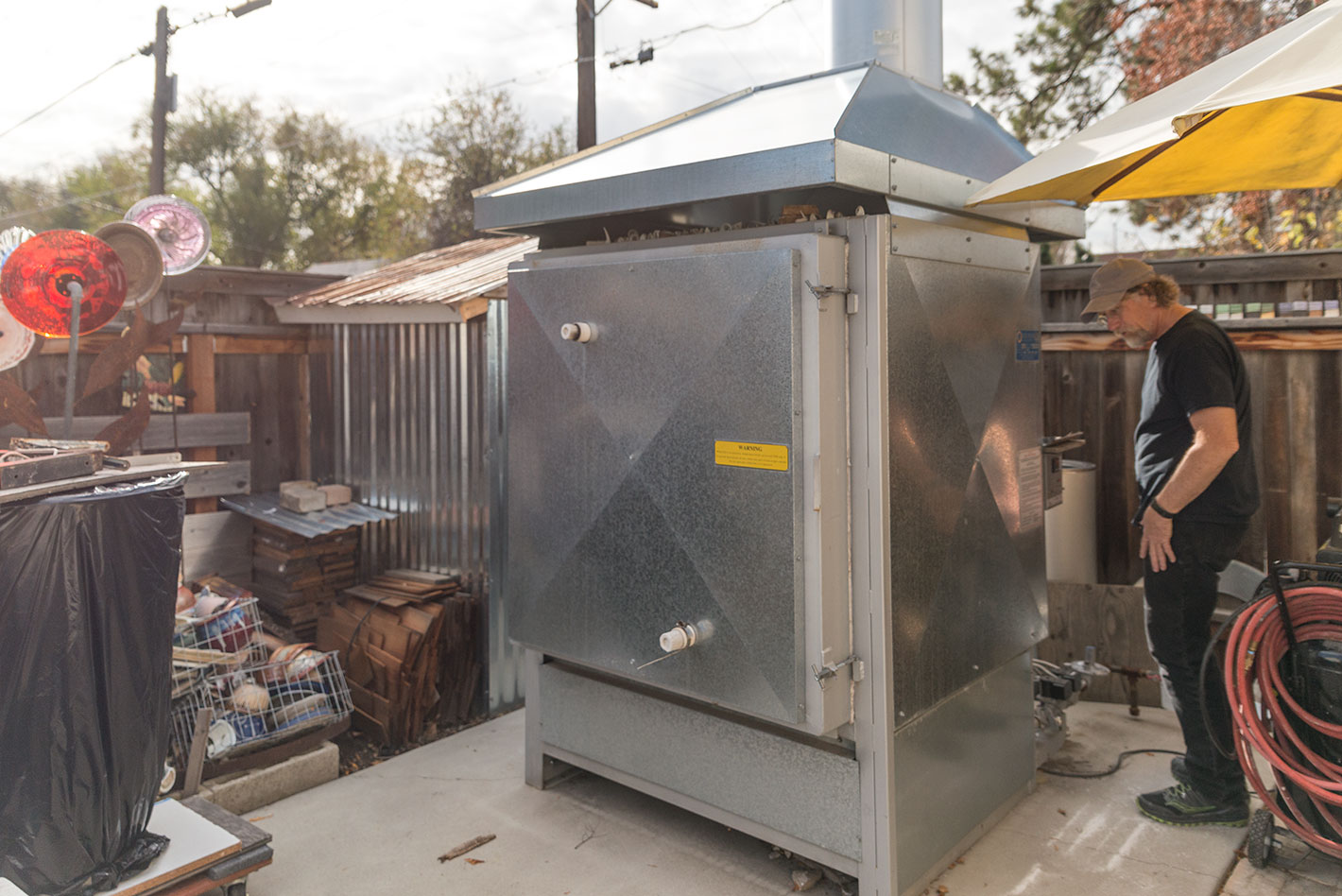 You’re puttin’ in the work!
You’re puttin’ in the work!
Yeah [Laughs]! My relationship with my kiln is that way. I am getting to know my kiln intimately. So if I just stuck a keypad and some numbers, that’s not going to happen. I am not going to have that—
Are we still talking about kilns, or..?!
[Laughs] There are some advantages with technology; now there’s 3D modeling in ceramics. 3D printers are exactly the same thing. Taking a digital image, putting it into a computer program and eventually this thing is squirting out—clay. All of the sudden, things that have taken me 40 years to figure out—somebody who has never thrown a pot can just punch a shape in and it will squirt out of this machine [Laughs]. But, ceramics has been for 4-5,000 years!
That’s why I wondered about technology and clay. Do you go to the Bruneau Sand Dunes ever? I love that feeling when you dig your bare hands and bare feet into the dune. It’s very grounding. What is that feeling?
The tactile-ness of it. Clay is beautiful! Earlier I was saying I throw all in porcelain because it’s so smooth and buttery and it slides through your hands.
It has a somatic effect on me. Calming.
It is.You hear potters all over the world say ‘Clay got into my blood. It grabbed a hold of me.’ I think that’s part of what you’re talking about. And I love using my hands. I have to use my hands. If I go more than just a few days without building something, whether it’s clay or wood or whatever, I go nuts.
Does that happen to you a lot in the winter?
It happens year-round. The fortunate thing is I have a studio I can come into; light a fire in my wood stove, hunker down and make pots. I also do a lot of woodworking.
That reminds me! You have a place up in Atlanta, Idaho? And you built the house, or re-built it, rather?
Yes, our house was originally in another mining town, Rocky Bar. It was a pretty well known house. There was nobody living in Rocky Bar when we got it, but the last person who lived there full time was Charles Sprittle. He passed away in the 60’s.
I’ve heard his story, it’s a sad one.
Yes. It was a unique house, but one day this fellow was up there tearing it apart and burning the pieces.
He was tearing it down because he was afraid of the liability? Kids were coming up breaking windows and stuff?
Yes. He didn’t care about the history of it or anything. Some friends of mine were up there for a day trip, Jack and Frank, so they stopped him and offered to buy the house.
I think they said they paid two hundred bucks.
We had a bare lot at the time. We went and talked to him about moving it down the mountain. He was kind of grumpy, but he said as long as we could get it out of there by the end of August. So we just started at the top. Started pulling boards one by one with crowbars—
I could never do that. I’m too impatient. But you did rebuild it, and it’s beautiful! What’s that big pile of lumber on your property next to the house?
That’s another house. It was part of the Central Addition here in Boise off of Myrtle Street and Fifth. We took that one apart board by board too. We are hoping to get it put back together in the next year or so.
Wow! You’re going to do it again!?
Yes, so they were jacking up these houses, you know, traditional moving. Driving semis in the middle of the night to haul them away. Well, we were hauling them up to Atlanta, so there’s no way you could do it the traditional way on that narrow dirt road. So I would go up, take a board off carefully so I wouldn’t break it, hand it to Evy, and she would take all the nails out. And we would have friends drop in and lend a hand.
Did you have a lot people walking by, making comments?
A lot. Some asked ‘Why are you dismantling it?’ We talked about a preservationist mentality—saving old buildings. That it’s, a 1903 house, and how we appreciate the history.
Did people say, like, why not just throw it in the dumpster?
I did have a few of those. ‘It would be a lot easier if you bulldozed it.’ They didn’t understand the whole idea around trying to preserve it.
You have a lot of projects. Have you ever been stuck? I mean, in your work?
No. Never. My problem is that I tend to always be thinking of what’s next. Sometimes, it’s like ‘Slow down. Stay where you’re at.’ I’ve been frustrated. Big time frustrated. Times in the studio where I’ve been like, ‘God, I can’t get this to work,’ or it just doesn’t look right.
With clay, have you ever been so frustrated that you just smashed it? The thing you’re working on?
Oh yeah.
I did that with a pie crust once. Actually, I threw it.
I may have on one occasion or two thrown a pot—I was joking with my students, saying that’s why they call it throwing [working on the wheel,] because there must have been some potter that was pissed off and threw the pot across the room. Clay has a mind of its own and sometimes it’s telling you what to do.
The trick is to listen, I bet. Ceramic art also has that tricky relationship between form and function—
One thing that is really important for me is that I want people to use my pots. I think there’s a transfer between the potter and the user. For example, if I make a coffee mug and I use a unique glaze, and I create the handle, then when you hold it, you’re holding a handle that I pulled and that I shaped. Your hand is where my hand was. When I hold another potter’s cup, I feel how they made it. I feel the shape. I can look at the glaze and appreciate what they’ve done. And so I’m getting something from them. I am receiving something by using the cup, versus just looking at it, the way you would a painting.
You make it sound transcendent, sublime almost. Now I’m depressed. My coffee mugs have no soul.
If you’re living with factory made pots, plates, and bowls you need to branch out. It makes the food taste better and you’ll enjoy the meal better. Trust me, it’s rewarding.
North End
December 5, 2018
Mayor’s Awards for Excellence in the Arts
Creators, Makers, & Doers highlights the lives and work of Boise artists and creative individuals. Selected profiles focus on individuals whose work has been supported by the Boise City Dept. of Arts & History.
